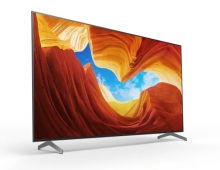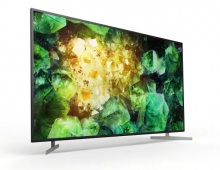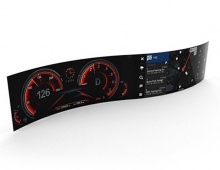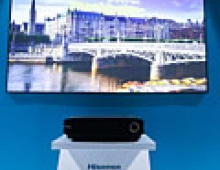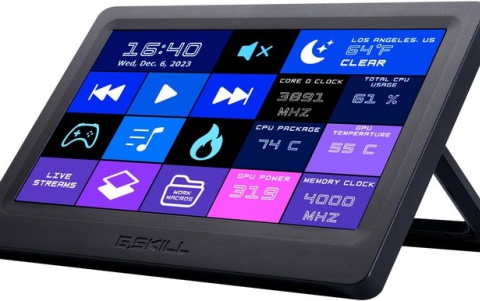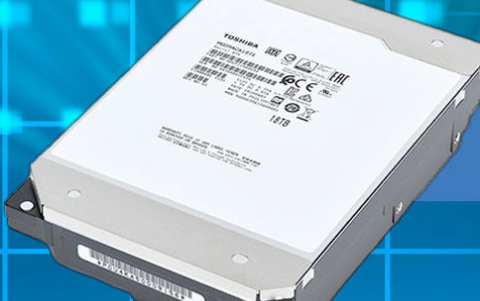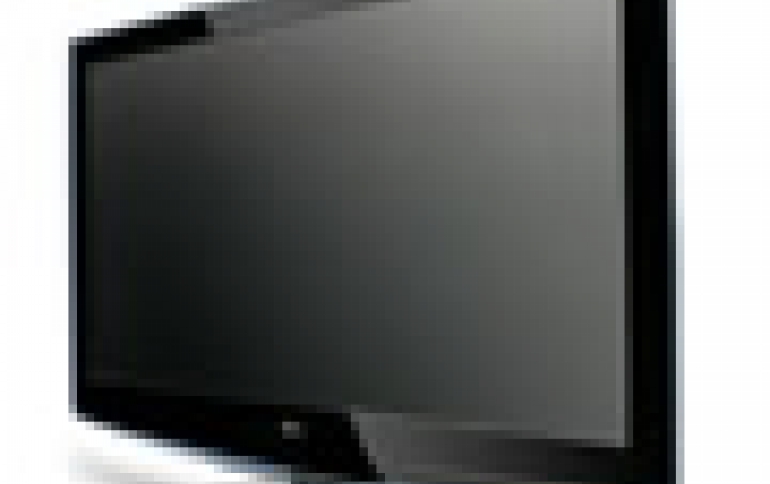
Some Facts About LED-backlit LCD TVs
There is some optimism regarding the use of LED backlighting in new LCD-TVs that are expected to appear next summer. But is it worthy to replace your current LCD TV with a new one?
LEDs are used in LCD TVs to illuminate the display. LCDs are a transmissive display type, meaning they do not generate their own light and therefore need a separate illumination source, known as a backlight. Most LCD displays available today have used Cold-Cathode Fluorescent Lamps (CCFLs) as the backlight. However, the declining prices of LEDs are making them a viable competitor to CCFLs.
The mesage issued by LCD-TV makers at CES was clear: LED backlighting and thinner form factors represent the future of the market. The trick for the TV makers was to create thinner sets, which enable thinner designs and are more attractive to consumers.
An advantage of the LED-backlit LCD TVs is the fact that they consume less electricity than their CCFL-equipped counterparts. The majority of LED backlit LCD TVs comply with Energy Star requirements, an attractive feature for consumers, who have come to view the Energy Star label as a guarantee of greenness and reduced energy costs.
While the energy consumption and form-factor benefits of LED backlighting are unquestioned, there is some debate over how much the technology actually improves the image on LCD TVs. Most of the current LED-equipped LCD TVs use edge-mounted designs that place the diodes at the borders of the display. This allows for the thinner form factors that consumers appreciate, but it does not provide any major improvement in contrast ratios, according to Sweta Dash, director of LCD research for iSuppli.
Contrast ratio is the ratio of the luminance of the brightest color to that of the darkest color that a television is capable of producing. Televisions with superior contrast ratios get rid of excess off-state light when a LCD pixel is turned off, delivering a better picture. "In terms of image quality, using a edge-mounted LED backlighting design in a large sized LCD TV is like putting a Ferrari engine in a Ford Pinto," quipped Jagdish Rebello, director and principal analyst for LED research at iSuppli. "There is no improvement in picture quality and the color gamut of the display is actually less than when using a CCFL."
An alternative approach to using LEDs in LCD TVs, the full-array backlight, provides sharp improvements in contrast ratio, according to Sweta Dash, director of LCD research for iSuppli.
"The highest-quality images on LCD-TVs will be on sets that use the full-array backlight approach because it provides the best dynamic contrast ratio, which in turn improves perceived image color and sharpness." said Randy Lawson, senior analyst, digital television semiconductors for iSuppli.
Another aspect of image quality hinges on the type of LEDs used in LCD TVs. Most LED-backlit LCD TVs now employ white LEDs, rather than the more costly Red, Green, Blue (RGB) alternatives. RGB LEDs provide a superior color gamut than white LEDs, providing richer and more varied colors in television sets.
"RGB LEDs are tidy and are the ideal best solution for LCD backlighting," Patel said. "But pricing is still too high and these won?t show up in LCD TVs in significant numbers until 2010." Beyond televisions, LEDs are used for backlighting of desktop monitors and notebook PC LCD displays.
Declines in prices and newer higher-brightness LEDs are enabling their usage as backlights in LCD TVs, according to iSupply. Average pricing for LEDs is on the wane, allowing LED-backlit sets to become more price competitive with comparable CCFL sets.
iSuppli expects LCD-TV makers will offer a mix of thin form-factor edge-mounted designs and high image quality full-array alternatives during the coming years.
The mesage issued by LCD-TV makers at CES was clear: LED backlighting and thinner form factors represent the future of the market. The trick for the TV makers was to create thinner sets, which enable thinner designs and are more attractive to consumers.
An advantage of the LED-backlit LCD TVs is the fact that they consume less electricity than their CCFL-equipped counterparts. The majority of LED backlit LCD TVs comply with Energy Star requirements, an attractive feature for consumers, who have come to view the Energy Star label as a guarantee of greenness and reduced energy costs.
While the energy consumption and form-factor benefits of LED backlighting are unquestioned, there is some debate over how much the technology actually improves the image on LCD TVs. Most of the current LED-equipped LCD TVs use edge-mounted designs that place the diodes at the borders of the display. This allows for the thinner form factors that consumers appreciate, but it does not provide any major improvement in contrast ratios, according to Sweta Dash, director of LCD research for iSuppli.
Contrast ratio is the ratio of the luminance of the brightest color to that of the darkest color that a television is capable of producing. Televisions with superior contrast ratios get rid of excess off-state light when a LCD pixel is turned off, delivering a better picture. "In terms of image quality, using a edge-mounted LED backlighting design in a large sized LCD TV is like putting a Ferrari engine in a Ford Pinto," quipped Jagdish Rebello, director and principal analyst for LED research at iSuppli. "There is no improvement in picture quality and the color gamut of the display is actually less than when using a CCFL."
An alternative approach to using LEDs in LCD TVs, the full-array backlight, provides sharp improvements in contrast ratio, according to Sweta Dash, director of LCD research for iSuppli.
"The highest-quality images on LCD-TVs will be on sets that use the full-array backlight approach because it provides the best dynamic contrast ratio, which in turn improves perceived image color and sharpness." said Randy Lawson, senior analyst, digital television semiconductors for iSuppli.
Another aspect of image quality hinges on the type of LEDs used in LCD TVs. Most LED-backlit LCD TVs now employ white LEDs, rather than the more costly Red, Green, Blue (RGB) alternatives. RGB LEDs provide a superior color gamut than white LEDs, providing richer and more varied colors in television sets.
"RGB LEDs are tidy and are the ideal best solution for LCD backlighting," Patel said. "But pricing is still too high and these won?t show up in LCD TVs in significant numbers until 2010." Beyond televisions, LEDs are used for backlighting of desktop monitors and notebook PC LCD displays.
Declines in prices and newer higher-brightness LEDs are enabling their usage as backlights in LCD TVs, according to iSupply. Average pricing for LEDs is on the wane, allowing LED-backlit sets to become more price competitive with comparable CCFL sets.
iSuppli expects LCD-TV makers will offer a mix of thin form-factor edge-mounted designs and high image quality full-array alternatives during the coming years.

